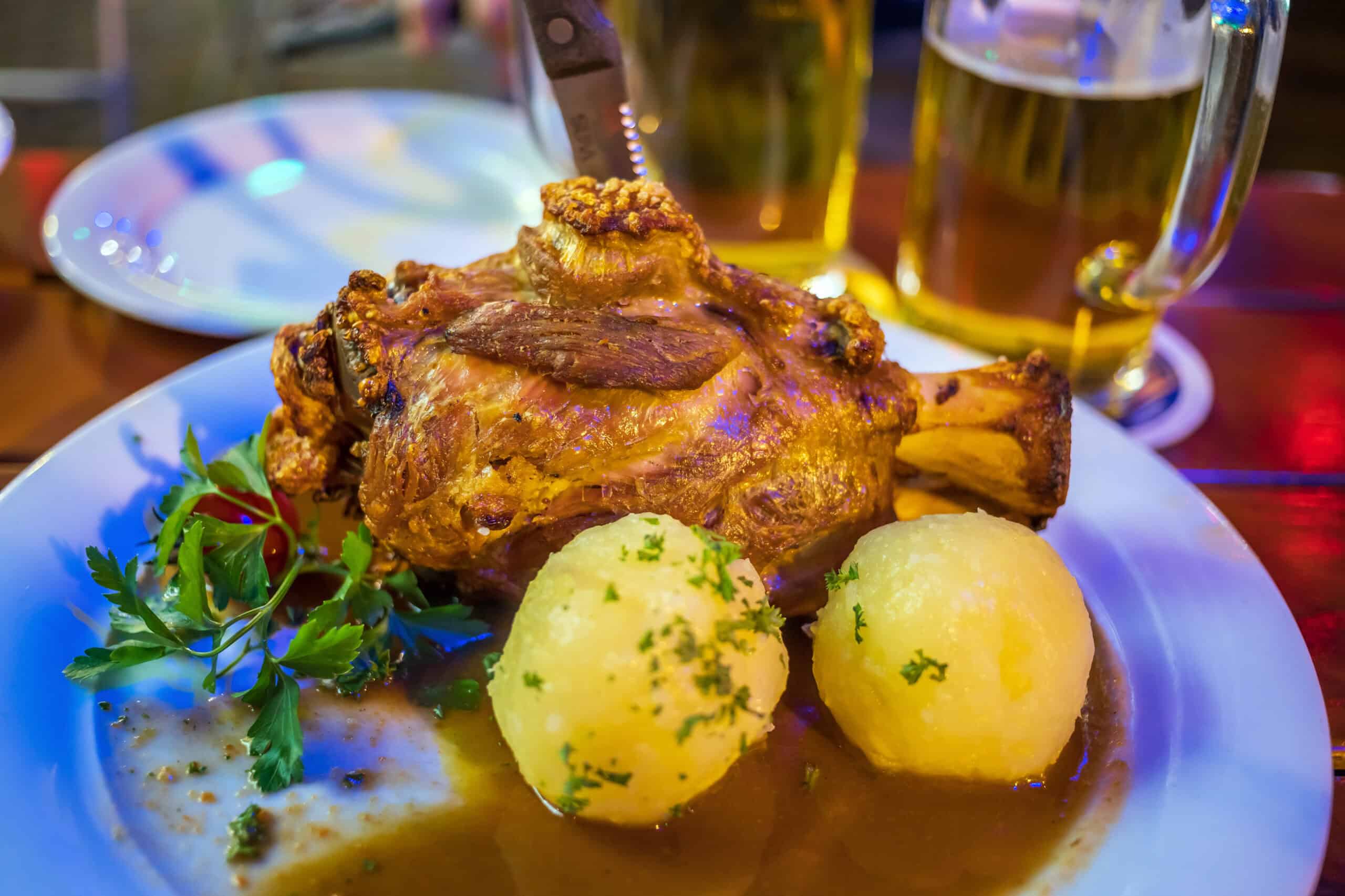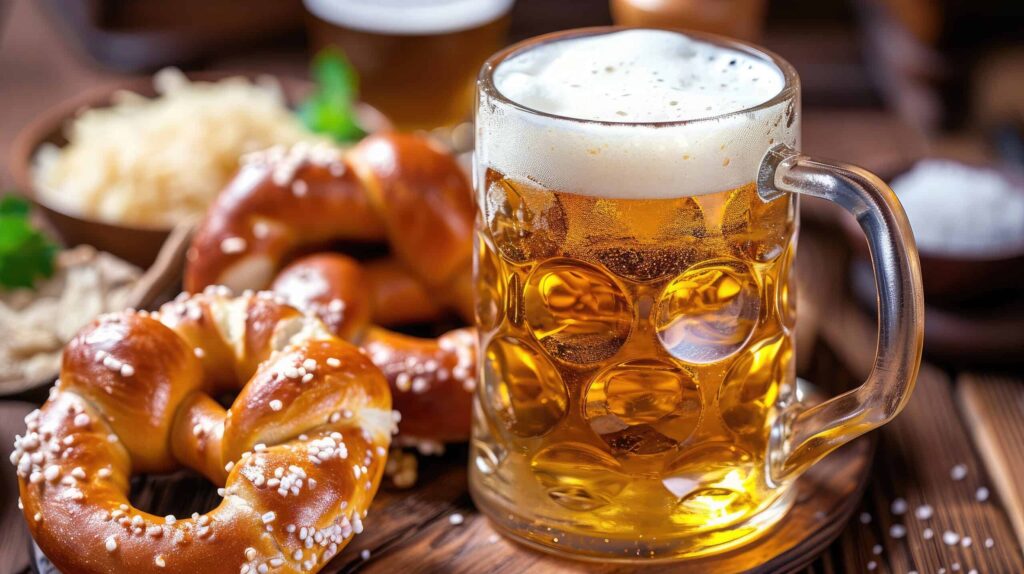Experience the rich tapestry of flavors, spices, regional dishes, national dishes, and desserts that define the culinary landscape of Germany. From hearty sausages to delectable pastries, German cuisine reflects a blend of tradition and innovation. Dive into a world where pretzels, schnitzels, and potatoes reign supreme, offering a taste of history with every bite. Whether you’re savoring a comforting bowl of sauerkraut or indulging in a slice of Black Forest cake, each dish tells a story rooted in German heritage. Explore how regional specialties like currywurst and spätzle, dishes that showcase the variety of influences that have shaped German food over the centuries. Get ready to tantalize your taste buds and discover why food in Germany is not just a meal but an unforgettable journey through time.
Key Takeaways
- Try traditional German foods: Sample dishes like sauerbraten, schnitzel, and currywurst to experience the rich culinary heritage of Germany.
- Savor German beverages: Enjoy a variety of beverages such as beer, especially the famous Oktoberfest brews, and explore the world of German wines like Riesling.
- Explore regional German cuisine: Dive into the diverse flavors of Germany by trying specialties from different regions like Bavaria, Swabia, and the Rhineland.
- Visit local markets: Immerse yourself in the food culture by visiting local markets like Viktualienmarkt in Munich or Markthalle Neun in Berlin for a true taste of Germany.
- Attend food festivals: Experience the vibrancy of German food culture by attending festivals like the Berlin Food Week or the Stuttgarter Weindorf.
- Cook German recipes at home: Bring a piece of Germany into your kitchen by trying out recipes like Black Forest cake, pretzels, or potato pancakes.
Discovering Traditional German Foods
Bread Rolls
Bread holds a significant place in German cuisine, with bread rolls being a staple enjoyed throughout the day, especially at breakfast. Germans take pride in their diverse selection of freshly baked bread.
National Dishes
Traditional German dishes such as Rouladen and Kartoffelpuffer showcase the rich culinary heritage of Germany. These dishes offer unique flavors and ingredients, reflecting regional influences.
Potato Dumplings
Potato dumplings, known as Kartoffelknoedel, are a popular side dish in German cuisine. They are made from cooked potatoes, flour, and eggs, offering a hearty and comforting addition to meals.
Currywurst
Currywurst stands out as a beloved street food choice in Germany. This iconic dish features sliced pork sausage topped with curry ketchup, offering a perfect blend of savory and tangy flavors.
Potato Pancakes
Potato pancakes, or Kartoffelpuffer, are another traditional favorite in Germany. Made from grated potatoes mixed with onions, eggs, and flour, these pancakes are fried until crispy and golden brown.
Exploring German Beverages
Coffee
Germans have a deep-rooted love for coffee, making it a staple in their daily routines. Whether it’s a quick pick-me-up in the morning or a leisurely afternoon break, coffee plays a significant role in German culture. The country boasts numerous cozy cafes where locals gather to savor their favorite brews.
Beer
Beer holds a special place in German culture, with a rich brewing tradition dating back centuries. It is not just a beverage but an integral part of social gatherings and celebrations. Germans take pride in their diverse beer varieties, each brewed meticulously following strict purity laws.
Tea
While coffee reigns supreme, tea also enjoys popularity among Germans, especially during colder months. From traditional black tea to herbal blends, Germans appreciate the warmth and comfort that tea brings. Many households stock up on various teas to cater to different preferences.
Schnapps
For those inclined towards stronger spirits, schnapps is a favored choice. This distilled alcoholic beverage comes in various flavors, with fruit-infused options like cherry schnapps being particularly popular. Germans often enjoy schnapps as a digestif after meals or during festive occasions.
Riesling Wines
Germany’s wine culture is renowned worldwide, with Riesling wines standing out as one of the country’s prized offerings. These aromatic white wines are celebrated for their crispness and versatility, pairing well with a range of dishes. Wine enthusiasts often flock to Germany’s picturesque vineyards to sample these exquisite wines.
Juice
When it comes to non-alcoholic options, juice holds its own in the German beverage scene. From classic apple and orange juices to more unique blends like cherry juice, Germans appreciate the freshness and natural flavors of quality juices. Many local markets offer an array of freshly squeezed options for consumers to enjoy.
Delving into Regional German Cuisine
Local Specialties
Germany boasts a rich tapestry of regional dishes that vary significantly across its diverse landscapes. From the hearty schnitzel in the south to the flavorful döner kebab in urban centers, each region offers a unique culinary experience.
Influence of Local Ingredients
The use of local ingredients plays a pivotal role in shaping German cuisine, with regions incorporating indigenous produce and meats into their traditional recipes. For instance, the southern regions are renowned for their succulent sour roast, while the north embraces seafood and fresh vegetables in their dishes.
Cultural Preservation and Culinary Tourism
Embracing regional variations is not just about food; it’s a celebration of cultural heritage. By preserving age-old recipes and cooking techniques, Germany showcases its culinary diversity to both locals and tourists alike. This emphasis on authenticity fosters culinary tourism, attracting food enthusiasts from around the globe.
Final Thoughts
You’ve now uncovered the rich tapestry of traditional German foods, explored the diverse world of German beverages, and delved into the unique regional cuisines that make Germany a culinary delight. Embrace the opportunity to savor these flavors and immerse yourself in the gastronomic wonders that Germany has to offer.
Take your taste buds on a journey through Germany’s culinary landscape. Whether you’re sampling hearty sausages in Bavaria, indulging in decadent Black Forest cake, or enjoying a refreshing glass of Riesling in the Mosel Valley, each bite and sip will transport you to the heart of German culture. So, why not plan your next culinary adventure to Germany and experience firsthand the delectable delights waiting for you?
Frequently Asked Questions
What are some traditional German foods to try?
German foods to try include schnitzel, sauerkraut, bratwurst, and pretzels. These dishes showcase the rich culinary heritage of Germany and offer a delightful experience for food enthusiasts.
What are popular beverages in Germany?
Popular German beverages include beer, especially varieties like Pilsner and Weizenbier. Germany is known for its quality wines such as Riesling and Müller-Thurgau, offering a diverse range of options for beverage enthusiasts.
How does regional German cuisine vary across the country?
Regional German cuisine varies greatly across the country due to historical influences and local ingredients. For example, Bavarian cuisine features hearty dishes like roast pork with dumplings, while Northern Germany offers seafood specialties like Labskaus.
Are there vegetarian or vegan options, like vegetables or side dishes, in traditional German cuisine?
Yes, traditional German cuisine offers vegetarian and vegan options such as potato pancakes (Kartoffelpuffer), vegetable stews (Gemüseeintopf), and red cabbage salad (Rotkohlsalat). These dishes cater to individuals with dietary preferences or restrictions while still embodying authentic German flavors.
Where can one sample authentic German foods and beverages?
To sample authentic German foods and beverages, visit local restaurants specializing in German cuisine or attend food festivals showcasing traditional dishes. Exploring markets in Germany provides an opportunity to taste regional specialties firsthand.




